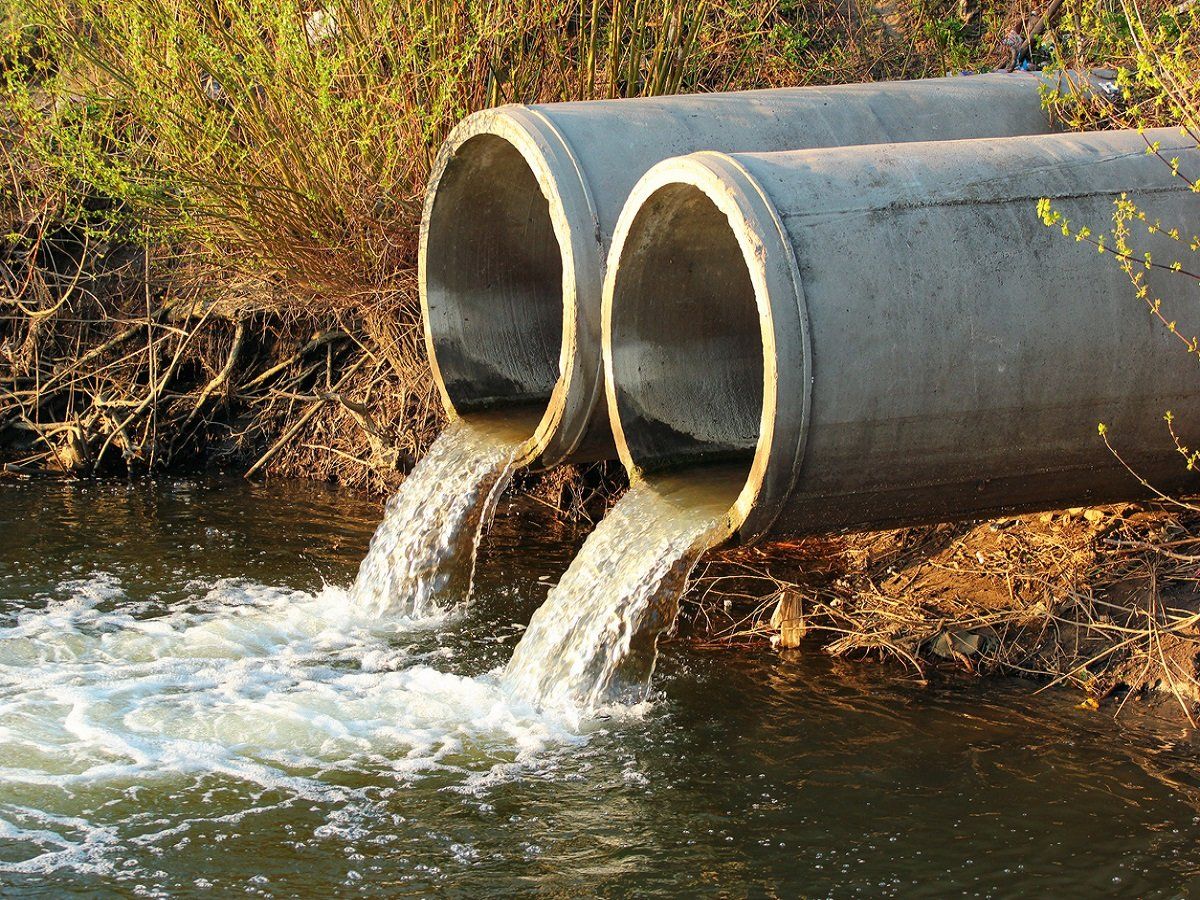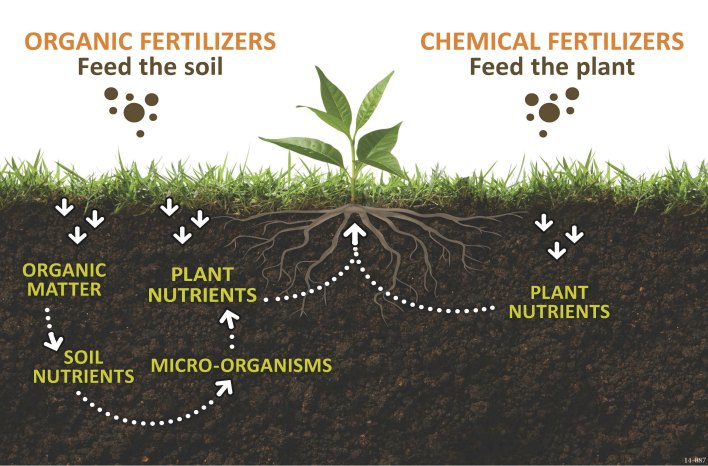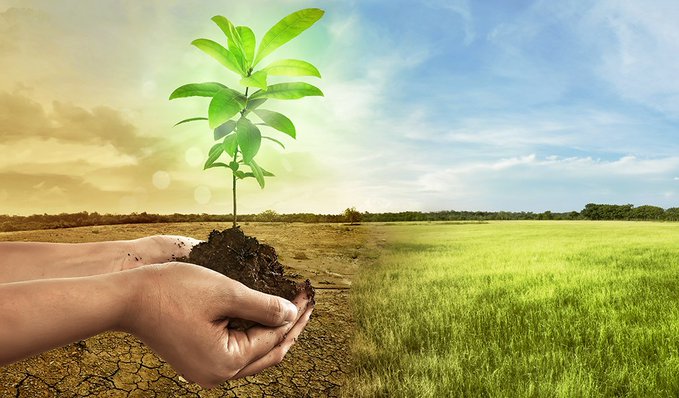Land Use and Soil
Agricultural land and land that has been used for activities other than agriculture can be contaminated with pathogenic organisms or toxic chemical substances. Obtaining a history of the prior use of the land is important because it helps identify these potential hazards. In addition, the failure of prior users to follow Good Agricultural Practices can offer risks of contamination to produce grown on the soil.
It is important to obtain information about the previous use of the land where agricultural production is taking place. This can be done through interviews with prior owners, a review of municipal permits, or other sources. This background information can help in the identification of situations that can increase the risk of fresh produce contamination.
Cultivated Land Information
Information that should be obtained about the history of the land includes if the land is being used or has been used for:
- Animal feeding or domestic animal production
- Barns or other housing of farm animals
- Garbage or toxic waste disposal, sanitary waste management
- Mining activities, or oil or gas extraction
Other information that should be obtained includes:
- If the land has experienced any serious flooding.
- If the land has been treated in an uncontrolled manner with organic or inorganic fertilisers and/or pesticides.
Prior use of the land for animal feeding or domestic animal production can greatly increase the risk of contamination of fruit and vegetables with pathogens commonly found in the intestinal tract of animals. The potential for contamination from this source is related to the time that has passed since the land was used for animal feeding or production. The risk of contamination will also be influenced by conditions such as atmospheric temperature, sunlight and relative humidity.
The presence of barns or farm animals a short distance from the cultivation site increases the risk of product contamination. An assessment of the location of the animals and their facilities and an evaluation of drainage systems and water currents flowing near these areas will help determine the potential for contamination. In some instances, it may be necessary to create physical barriers or channels to divert water which may carry contaminants from the animals. When the land has been used for garbage disposal or as a waste management site, it may contain decomposing organic matter and faecal material. Depending on the garbage contents, soil microbial loads can be extremely high, and the soil may also contain harmful chemicals or toxic contaminants.
Land that has been used for mining or petroleum extractions can be contaminated with heavy metals or hydrocarbons. Even if the contamination is located on a small portion of the land, factors such as rainfall and subterranean water flow should be evaluated. Analysis of toxic substances in the soil and a review of the environmental compliance of the extraction operation is recommended when the ground history indicates a high risk for chemical hazards. Heavy flooding can increase the sources of contamination. Water runoff can introduce pathogens and chemical contaminants from remote areas. Dead animals and standing water that remains after the floodwater have receded can lead to significant bacterial hazards. Individual assessment of each flooding situation is necessary, along with a review of the time that has passed since the flood and other conditions that can mitigate or reduce the risks. When there is concern about the safety of the site, microbiological analyses after the flooding has occurred may assist in identifying contamination.
Even if the investigation of the prior use of the land indicates that it has been used solely for agricultural production, prior production practices should be reviewed. Improper use of organic fertilisers may result in microbiological contamination of the soil, while inorganic fertiliser and/or pesticides used improperly can cause serious chemical hazards. Chemical compounds should have been used according to label recommendations and the products should be registered for use on the specific crop.
Current or Prior Use of Adjacent Land
The landowner or operator should research both the present and prior use of adjacent lands to identify potential sources of contamination and precautions that need to be taken to prevent contamination of fresh produce in the orchards.
Contamination from areas away from the actual growing area can reach produce through a variety of means including water, wind, workers, vehicles, or equipment moving from one area to another.

Water Sources and Irrigation Practices
During the agricultural production of fruits and vegetables, water is used for numerous activities in the field, including pesticide and fertiliser applications and irrigation. Other water uses during produce handling include cooling, washing, waxing and the movement of fruit. In addition to activities where water comes in direct contact with produce, field and packhouse workers use water for drinking and hand washing.
Water used in agricultural activities can be contaminated with pathogenic bacteria that may cause severe health problems to consumers. It can be a source of and vehicle for many biological hazards. Such micro-organisms are associated with gastrointestinal diseases that, in severe cases, can cause death. Poor quality water may be a direct source of contamination and also an important vehicle for spreading micro-organisms in the production field. The severity of the hazard resulting from poor quality water will depend on the type and number of micro-organisms in the water and their capacity to survive on the produce.
In addition to the quality of the water, other factors that can increase the risk of contamination of produce by water include the stage of development and type of crop, the time between the contact of the produce with the water and harvest, and other water and produce handling practices. Fruits and vegetables with large surface areas, such as leafy vegetables, or those where the surface structure allows pathogens to adhere easily, are at a greater risk of contamination from water. This risk can be further increased when contact with contaminated water takes place near harvest time or during post-harvest handling.
Potential Contamination Associated with Water Sources
Among the most common sources of agricultural water are surface rivers, streams, and open canals. Other sources include reservoirs such as swamps, lakes, tanks, groundwater from boreholes and, occasionally, public water systems. Surface and reservoir sources vary considerably in their microbial content.
Microbial loads of surface water range from several thousand organisms per millilitre after a rainfall to a relatively low number after auto-purification, a normally occurring process in smooth waters. Surface waters can be exposed to temporary or intermittent contamination. This contamination can come from raw human and animal wastes, sewage water discharges, and water coming from adjacent areas dedicated to animal production or other contamination. Surface water generally flows some distances before it reaches the crop.
It is important to identify upstream sources of contamination to this flow. Elimination of this contamination may involve modification of the water’s route or the introduction of intervention methods, such as filters. Water destined for agricultural production can easily become contaminated with human and/or animal faeces. It is important to keep animals and children out of the orchards and to provide field workers with properly constructed and maintained restrooms or mobile sanitary units.
Water contamination with human faecal material also can occur if wells and water systems are not properly developed if septic systems fail or have deficiencies in their design, and from discharges that come from sewage treatment plants. Wildlife, including insects, rodents, reptiles, and birds, can carry diseases. Since these are found even in the most pristine environments, absolute protection of water is difficult and minimisation of potential contamination by wildlife should be the goal. It is generally believed that groundwater is less likely than surface water to be contaminated with pathogens since groundwater generally loses much of its bacterial and organic content after filtration through rock and clay layers. The bacterial content of groundwater may vary from a few to a few hundred organisms per millilitre. However, under certain conditions, such as with shallow, old, or improperly constructed wells, the potential for contamination of groundwater by surface water is a great risk.
Hazards Introduced by Irrigation Practices
Irrigation is the controlled application of water to the land or field with the purpose of providing the moisture levels required for the appropriate development of the plant. Irrigation plays a major role in achieving cultivable lands, especially in arid and semi-arid regions.
The hazards associated with irrigation practices are influenced by:
- Water source and quality
- Amount of water applied
- Irrigation program
- Irrigation method
- Soil drainage properties
- Pre-harvest interval
The closer to harvest irrigation occurs, the greater the chance for survival of pathogens and for the presence of residual chemicals on the produce. Irrigation methods, such as drip irrigation, where the contact between water and plant is minimised, are generally less likely to cause fresh produce contamination, however, the use of good quality water is still important.
Chemigation
Chemigation refers to the application of chemicals, such as fertilisers or pesticides, through the irrigation system. In crop production, fertilisers are often applied in this way, and this is referred to as fertigation.
When chemigation systems are not properly designed, they can result in serious groundwater contamination, increasing the risk of chemical contamination of fresh produce. Safety equipment is available that can prevent back-flow and subsequent groundwater contamination. This equipment is relatively inexpensive and can prevent serious hazards.
In the case of fertilisers, it is important to know the plant toxicity of the specific fertiliser and to pay close attention to calculated and recommended dosage rates and schedules of application.
Additional safeguards against contamination during chemigation include training and certification of applicators and water analysis at the source and at locations near the water source. In addition, it is important to identify the runoff direction if runoff takes place. In the case of fertilisers, it is important to know the plant toxicity of the specific fertiliser and to pay close attention to calculated and recommended dosage rates and schedules of application.
Agricultural Water Microbiological Testing Procedures
Microbiological analyses are generally performed as indicators of contamination, especially for the verification of cleaning programs for tanks, wells, or when contamination from a specific source or event is suspected. They are time-consuming and are used to track safety trends, not for daily monitoring activities, and are generally used to verify that the appropriate preventive measures are in place.
Proper records of water microbiological quality are an important good agricultural practice. It is important to document the frequency and results of each water test since changes in results may identify problems.
Testing for specific pathogenic bacteria in the water may be inappropriate. They could be present in very small amounts and thus not detected. Furthermore, microbiological characteristics of water can vary considerably depending on such factors as the water source, season, and sampling time. Since the waterborne disease is usually the result of faecal contamination of water supplies, it is more efficient to determine if faecal contamination is present than to actually look for the presence of pathogens.

Fertilisers
Good agricultural practices prescribe the use of soil and water conservation practices, such as channel construction, drain control structures, diversion tanks and vegetative barriers and so on, which act as physical barriers in the event of contaminated water runoff. A very important aspect of soil and water conservation is the management of fertilisers that are applied to the soil. Animal manure and solid biological waste may provide safe, effective fertiliser when properly treated. If the treatment is inadequate, or if no treatment is used, the risk of contamination of fruit and vegetables with pathogenic micro-organisms is extremely high.
The rate of survival of contaminants in manure and their transfer to crops depends on a number of factors. These include soil type, manure application rate, soil pH, composting method, and time of application. Raw materials commonly used to produce organic fertilisers include:
- Animal manure
- Post-harvest material
- Organic waste
- Bio-solids/sludge (human waste)
Inorganic fertilisers are produced through commercial chemical processes. Although the products themselves are generally not a source of microbial contamination, care should be taken to assure that contamination is not introduced using contaminated water to mix the products or unclean equipment used in their application.
Many inorganic fertilisers may cause residues that are unacceptable for the export requirements of certain markets. It is therefore very important to keep accurate fertilisation records in order to complete the cycle of traceability as well as to implement the relevant good agricultural practices.
Click here to view a video that explains why fertilizers matter.

Wildlife, Pest and Vermin Control
Animal Exclusion from Production Areas
All animals including mammals, birds, reptiles and insects are considered vehicles for contamination with pathogenic organisms. Many micro-organisms can be found on the surface of animals’ hair, feathers, hide, and skins, and in their respiratory and gastrointestinal systems. In addition to food-borne pathogens, animals can carry many spoilage microorganisms, which can greatly reduce the quality and shelf-life of fresh produce. Quality deterioration also can be accelerated by physical damage to the surface of the fruit caused by animals, birds and insects.
In addition to lowering quality, the wounded surfaces become an open door to pathogenic and spoilage organisms, greatly increasing the risk of contamination of the internal parts of the produce.
Maintain domestic and farm animals away from the fruit orchards and establish physical barriers or vegetation to prevent the entry of wild animals. These precautions are especially important near harvest time. Field workers should not be allowed to bring dogs, cats or other domestic animals into the field, packaging areas or storage facilities. Dead or trapped animals such as birds, insects, and rats, should be disposed of promptly to avoid attracting other animals. Proper disposal procedures are to bury or incinerate the animal.
It is important to keep areas around the orchards clean and neat to further protect the plants and fruit. The following general guidelines should be adhered to:
- Keep the grass short to avoid the presence of rats, reptiles and other pests.
- Keep all areas free of garbage.
- Remove all unnecessary equipment. Old and broken equipment provide protection for rats and insects.
- Remove nests from fields and buildings.
Since animals are attracted by water, the presence of water in the orchards and in the fruit packing or storage area should be limited to what is needed for specific uses. In the packhouse, surfaces and floors should be kept clean and as dry as possible to avoid water that may promote bacterial and pest growth. Water tanks and storage containers should be capped to prevent access to water sources.
